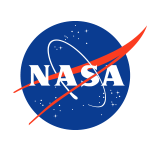Small Business Innovation Research/Small Business Tech Transfer
High-Gain, Low-Excess-Noise APD Arrays for Near-Single-Photon-Sensitive LADAR
Project Description

One of the challenges facing missions to other planetary bodies including Earth's Moon, Mars, Venus, Titan, Europa; and proximity operations (including sampling and landing) on small bodies such as asteroids and comets' is the ability to provide accurate altimetry for descent, then assess safe landing sites by surveying the landscape. To address NASA's need for space-hardened planetary entry, descent, and landing (EDL) and proximity-operations sensors, a low-cost, high-pixel-density avalanche photodiode detector array technology will be developed that is sensitive in the 0.9-μm to 1.7-μm spectral range and when operated at room temperature, can achieve nearly noiseless avalanche gain, allowing for near-single-photon sensitivity. In Phase I, a series of detector structures will be grown, fabricated, and tested. The performance of the detectors will be used to predict performance of the arrays when coupled to low-noise readout integrated circuits. Single element devices coupled to low-noise amplifiers will be used to validate the predictive models.
More »
Anticipated Benefits
Missions to solar systems bodies must meet increasingly ambitious objectives requiring highly reliable soft landing, precision landing, and hazard avoidance capabilities. Robotic missions to the Moon and Mars demand landing at predesignated sites of high scientific value near hazardous terrain features such as escarpments, craters, slopes, and rocks, require large-format LADAR with high resolution. Other applications include: hazard avoidance, navigation, docking, LIDAR, and optical communications.
The discovery of increasing uses of and diverse applications for LIDAR data has led clients to press LIDAR providers for more accurate data with better classification results. With better accuracy, it will be possible for LIDAR providers to create new and improved methodologies, thereby improving their ability to deliver quantifiable data. Currently, the top three global uses of LIDAR data are: 1) topographic mapping; 2) flood risk assessments; and 3) watershed analysis. Natural resource applications in geology, water, and forestry are expected to increase in demand, and hydrology / flood applications will continue to grow, as well as power utility applications. In addition to these top-three expected growth areas, other applications include automobile collision avoidance, autonomous navigation, and others. More »
The discovery of increasing uses of and diverse applications for LIDAR data has led clients to press LIDAR providers for more accurate data with better classification results. With better accuracy, it will be possible for LIDAR providers to create new and improved methodologies, thereby improving their ability to deliver quantifiable data. Currently, the top three global uses of LIDAR data are: 1) topographic mapping; 2) flood risk assessments; and 3) watershed analysis. Natural resource applications in geology, water, and forestry are expected to increase in demand, and hydrology / flood applications will continue to grow, as well as power utility applications. In addition to these top-three expected growth areas, other applications include automobile collision avoidance, autonomous navigation, and others. More »
Project Library
Primary U.S. Work Locations and Key Partners
| Organizations Performing Work | Role | Type | Location |
|---|---|---|---|
| Voxtel, Inc. | Lead Organization | Industry | Beaverton, Oregon |
 Langley Research Center
(LaRC)
Langley Research Center
(LaRC)
|
Supporting Organization | NASA Center | Hampton, Virginia |
| University of Dayton | Supporting Organization | Academia | Dayton, Ohio |
Primary U.S. Work Locations
-
Ohio
-
Oregon
-
Virginia

Suggest an Edit
Recommend changes and additions to this project record.

